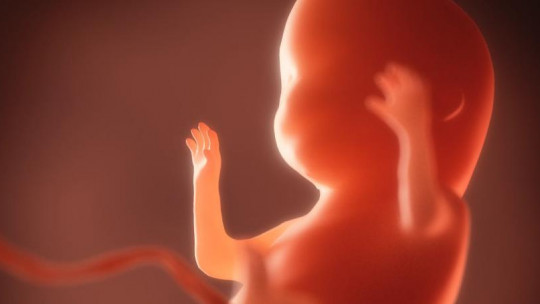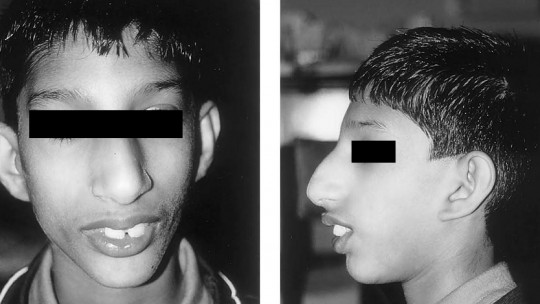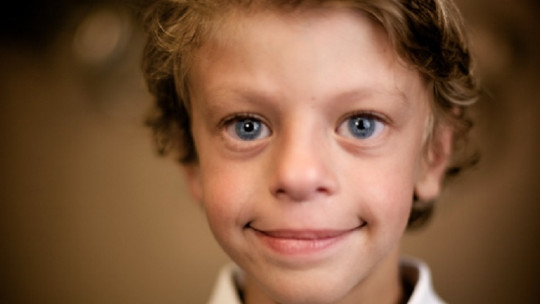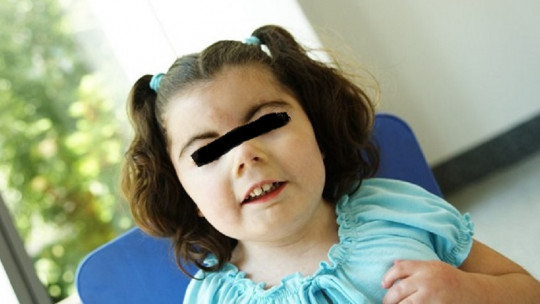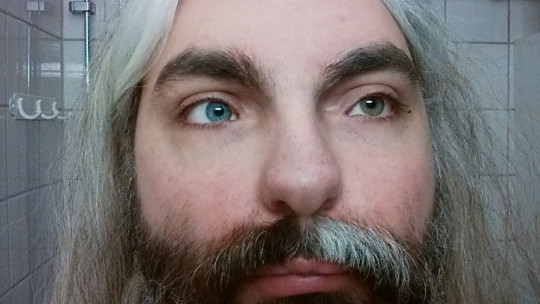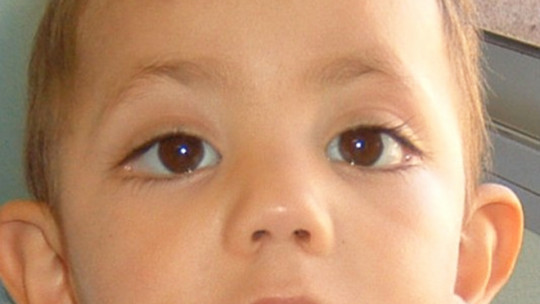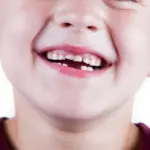If there is a characteristic that a large number of rare diseases share, it is having an underlying genetic component. We are talking about genomic alterations that occur randomly, or for which the cause has not yet been found.
Treacher Collins syndrome is one of these diseases, and is associated with a very characteristic facial physiognomy In this article we will see its characteristics, associated problems and treatment options.
What is Treacher Collins syndrome?
Treacher Collins syndrome is a genetically based condition that affects the craniofacial development of the fetus. This developmental alteration is characterized by causing symmetrical otomandibular dysplasia on both sides of the face and which is related to various anomalies in the skull and neck.
Dysplasia refers to an abnormality in the appearance of cells caused by adulteration that occurs during their maturation process. This cellular abnormality is irreversible and manifests itself through alterations in the development of a tissue, an organ or any anatomical portion of the organism.
In the cases of patients with Treacher Collins syndrome, this dysplasia affects the development of the cheekbones, ears and jaw Likewise, other indicators that are so visible are a reduced pharynx or alterations in the formation of the palate.
Treacher Collins is considered to appear in one in every 10,000 embryos Children of affected parents have a 50% probability of suffering from this syndrome, and its severity may vary unpredictably. On the other hand, in 55% of Treacher Collins cases the genetic alteration arises spontaneously, without the causes having yet been clearly established.
This syndrome receives its name in honor of the English surgeon and ophthalmologist, Edward Treacher Collins, who discovered a series of patterns or symptoms in common among different sufferers and described them in 1900. Several decades later, in 1949 , A. Franceschetti and D. Klein detailed these same particularities of the syndrome and They gave it the name mandibulofacial dysostosis
Symptoms and physical characteristics
There are a series of physical characteristics, both visible and internal, as well as alterations in some perception processes that are very distinctive of Treacher Collins syndrome.
Regarding alterations in craniofacial development, we find the following characteristics:
Regarding the physical features on the face people with Treacher Collins present:
Associated problems
Children affected by Treacher Collins syndrome are susceptible to a series of problems related to breathing, hearing, vision and hands. Although these problems do not always appear, they can be quite disabling, with respiratory problems being the most harmful to the child’s health.
Respiratory problems
Underdevelopment of the jaws forces the tongue to be placed in a more posterior position, very close to the throat ; resulting in a narrower airway than usual.
Therefore, parents should pay special attention when children develop any type of infection or cold that can inflame or congest the airways.
Hearing problems
Due to alterations in the formation of the inner ear, it is absolutely necessary to perform an evaluation of the child’s hearing ability as soon as possible
In most cases, patients have up to 40% deafness, so there is a need for a device that facilitates listening.
Visual problems
Visual problems are one of the most distinctive features of Treacher-Collins syndrome. The presence of drooping lower eyelids can cause very recurrent dry eyes.
Hand problems
Hand problems are the least common in these people. Nevertheless, some patients are born with alterations in the thumbs and may be considerably small or even born without them.
However, in cases where the baby is born without both thumbs, a thorough evaluation and diagnosis must be carried out, since it could be Nager Syndrome, which presents symptoms very similar to Treacher Collins.
Causes
Thanks to scientific advances in genetics, recently A specific gene has been discovered that causes Treacher Collins syndrome
The gene in question is TCOF1, also known as Treacle. This gene acts on the reproduction of ribosomal DNA gene , remaining active throughout the development of the embryo. Specifically in those areas destined to become facial bones and tissues.
Diagnosis
The diagnosis of Treacher Collins syndrome is based on the evaluation of the clinical picture mentioned above, as well as complementary examinations and molecular analyzes that certify the diagnosis. These molecular analyzes can be carried out during the prenatal period collecting chorionic villus samples (CVS).
Likewise, ultrasounds performed at this stage can reveal both facial dysmorphism and the ear alterations so characteristic of this syndrome.
Treatment and prognosis
Treatment of Treacher Collins syndrome It must be carried out by a group of craniofacial specialists who work in constant synergy, coordinating with each other.
Craniofacial specialist teams They are particularly qualified for the treatment and surgical practice of disorders related to the face and skull. Within these teams are:
Regarding the prognosis, generally, children with Treacher Collins syndrome they mature correctly into adults of normal intelligence without any need for care or dependency. However, they may need the help of psychotherapy to deal with issues related to self-esteem issues and possible social inclusion issues.


